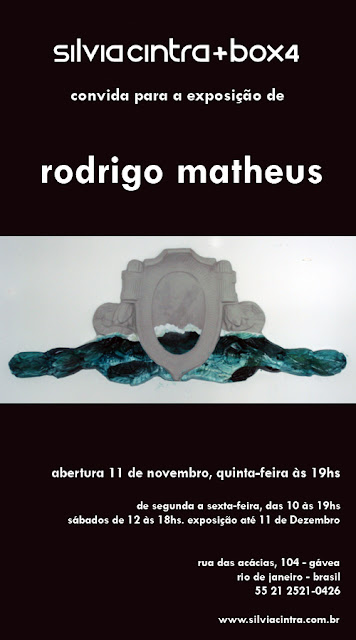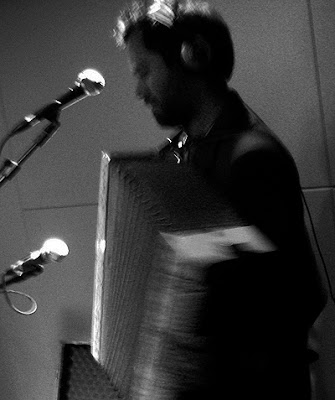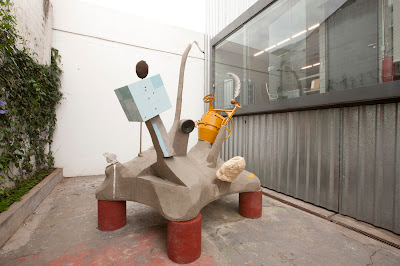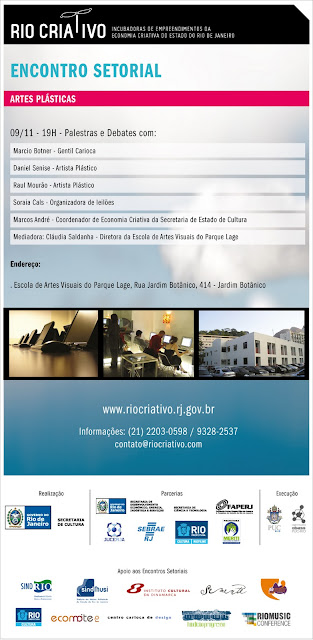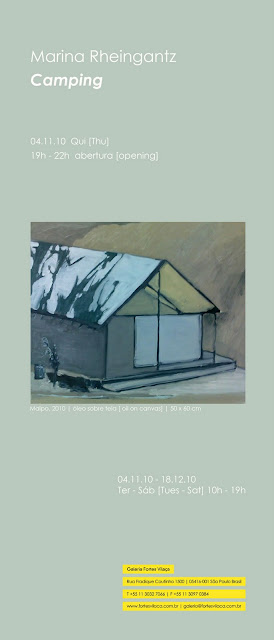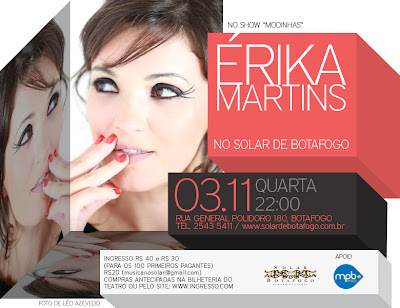A série de encontros que estão acontecendo – de forma gaga, porém firme – no MAM-RJ tinha no início um objetivo simples: juntar pessoas, conversas, trabalhos, pontos de vistas, contrastes e conflitos. Colocar lado a lado duas pessoas com alguma coisa em comum, porém com dicções, espaços de atuação e olhares diferentes. Diferentes gerações ou não. Outros papos.
Papos que, infelizmente, estão vazios. Fazer encontros no MAM toda terça-feira, 18 horas, tem se mostrado uma tarefa inglória do ponto de vista do público. Mas apenas do público. Nos três encontros – Bernardo Vilhena + Daniela Labra (Palavra e performance) / Marcos Chaves + Domingos Guimarães (Poetas urbanos) / Tatiana Grinberg + Ana Paula Kiffer (Escritas do corpo) – a dinâmica imaginada aconteceu, cada um do seu jeito. No primeiro encontro, mais formal, poeta e curadora cruzaram histórias e países através da poesia e da performance. No segundo encontro, Marcos e Domingos trocaram imagens e descortinaram os olhos dos presentes. Se conheceram melhor e se reconheceram no trabalho do outro. Ontem, com Tatiana e Ana Kiffer, a conversa fluida, o papo agudo, as grandes sacações que reuniram filosofia, literatura, Artaud, Beckett, medicina, Barthes, próteses, não-objetos, escutas, deslocamentos do porto seguro do texto crítico, tudo isso foi falado enquanto ambas se conheciam e, novamente, se encontravam no trabalho uma da outra.
Para quem monta uma mesa com a intenção de MULTIPLICAR AS IDEIAS para muitos, sempre cada vez mais para mais e mais pessoas, para quem trabalha para que o MAM volte a ser o local em que daqui a dez, vinte anos, as pessoas poderão dizer que foi onde se conheceram e começaram a trabalhar juntas, a noite de ontem foi o topo e o fundo do poço. O topo, pois a mesa montada foi a realização de um novo modelo de conversa pública sobre arte e literatura, sem palestras tensas ou densas, sem preguiça do mesmo, mas com excitação do conhecimento mútuo, das ideias frescas que circulam entre os que estão na mesa. E o público sente. Mas o fundo do poço também, pois, mais uma vez, tivemos menos do que dez pessoas. Nem dez pessoas. E, mesmo assim, os sete, oito, que compareceram, saíram felizes, ligados, interessados. Os convidados, ao contrário do constrangimento do pouco público, gostaram do papo, do encontro, das duplas.
Sei que há, como diria o velho Marx, um espectro rondando nossa cidade. Esse espectro é o da vaziez. Assim como os encontros do MAM ficam vazios, outras mesas, palestras e encontros pelo Rio afora também ficam. Mas não deixa de ser incômodo. Não deixa de ser sintoma e caldo para pensar o que vale a pena e o que não vale a pena tentar fazer, qual o público deve ser esperado. Aliás, qual o público que temos para palestras sobre literatura e as artes visuais? Será que é grande? Dá para o MAM, o Parque Lage, o CCBB, o Centro Cultural da Justiça Federal, o IMS, a Casa França Brasil, a PUC, o POP, a Casa do Saber e outros cursos mis por aí fazerem atividades no mesmo dia para esse público e todos serem felizes e cheios? Seria lindo. Mas como criar um público? Como oferecer informação com qualidade, de graça, com bons nomes, e não ter público? Aliás, qualidade nas instalações é mais importante que a qualidade do debate? E por outra, ainda é tempo de palestras e mesas redondas? Ainda estamos na era do seminário? As pessoas ainda querem se encontrar para ouvir e falar sobre o além do dia-a-dia cotidiano da vida? Preferimos comparecer de corpo ou ver a mesma fala no youtube? Dilemas.
O fato é que seguimos com a Nova Escrita para a Nova Arte, que não precisa ser nova para ser novidade, que inova o mesmo e amplia a ideia de novo, uma série de encontros para deixar o MAM ativo positivo operante frente suas obrigações com a cidade a qual ele pertence e frente a sua escorregadia população. Terça que vem, dia 16, Sérgio Martins, historiador da arte e Luiz Camillo Osório, crítico, filósofo e curador do MAM vão por em risco o discurso sobre a arte. Discurso crítico, discurso jornalístico, discurso acadêmico. Três registros de informação sobre a arte que precisam necessariamente da escrita como ferramenta de sentido. No dia 23, apresentamos o poeta Eucanaã Ferraz ao artista plástico e designer Carlito Carvalhosa para juntos ampliarmos a ideia de Livro na arte e na literatura, para pensarmos suas bordas poéticas, suas semelhanças e diferenças. No dia 30, eu e Sergio Cohn vamos dar uma geral na história das revistas de arte e cultura do Brasil, suas atuações, seus funcionamentos no circuito da arte, seu impacto na época e até hoje. Ainda falta uma última mesa, no dia 7, cujo tema, se conseguir as pessoas que gostaria para falar, será tipografia e caligrafia.
E vamos em frente. Para os poucos que já foram, meus mais devotos agradecimentos. Para os que querem ir mas não conseguem, um dia vai dar. De resto, aviso aos navegantes: mesmo devagar, mesmo no limite, mesmo como dá, o MAM está vivo e pensante. Prestando serviço. Aberto para quem quiser chegar. Toda terça (salvo algum imprevisto), estamos lá, 18 horas, na cinemateca. Trocando ideias. A casa está aberta. Para o alto e avante.




















